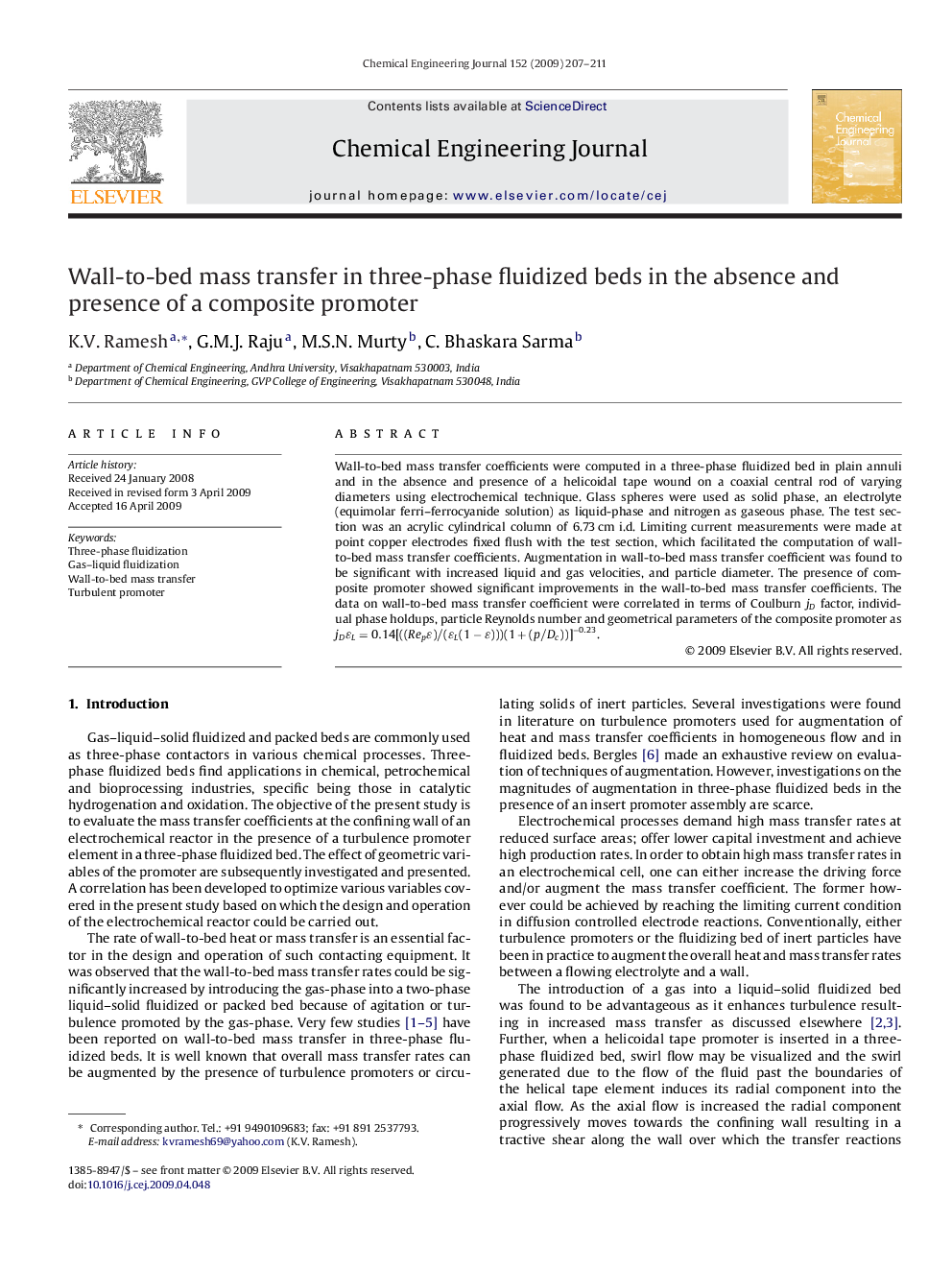| Article ID | Journal | Published Year | Pages | File Type |
|---|---|---|---|---|
| 153649 | Chemical Engineering Journal | 2009 | 5 Pages |
Abstract
Wall-to-bed mass transfer coefficients were computed in a three-phase fluidized bed in plain annuli and in the absence and presence of a helicoidal tape wound on a coaxial central rod of varying diameters using electrochemical technique. Glass spheres were used as solid phase, an electrolyte (equimolar ferri-ferrocyanide solution) as liquid-phase and nitrogen as gaseous phase. The test section was an acrylic cylindrical column of 6.73 cm i.d. Limiting current measurements were made at point copper electrodes fixed flush with the test section, which facilitated the computation of wall-to-bed mass transfer coefficients. Augmentation in wall-to-bed mass transfer coefficient was found to be significant with increased liquid and gas velocities, and particle diameter. The presence of composite promoter showed significant improvements in the wall-to-bed mass transfer coefficients. The data on wall-to-bed mass transfer coefficient were correlated in terms of Coulburn jD factor, individual phase holdups, particle Reynolds number and geometrical parameters of the composite promoter as jDεL=0.14[((Repε)/(εL(1âε)))(1+(p/Dc))]â0.23.
Related Topics
Physical Sciences and Engineering
Chemical Engineering
Chemical Engineering (General)
Authors
K.V. Ramesh, G.M.J. Raju, M.S.N. Murty, C. Bhaskara Sarma,
